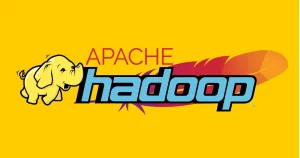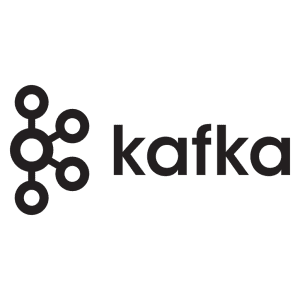Top Big Data Technologies You Must Know in 2024
In today’s rapidly evolving digital landscape, big data technologies are playing a pivotal role in how businesses operate and make decisions. With the increasing reliance on data for driving insights, predicting trends, and enhancing efficiencies, understanding the best big data technologies is crucial for anyone looking to stay competitive. From industry giants like Amazon and Apple to startups, the adoption of big data solutions is transforming industries globally. Here, we delve into the top big data technologies to learn in 2024, their benefits, examples, and case studies showcasing their real-world applications.
1. Apache Hadoop for Large-Scale Data Processing

Apache Hadoop, an open-source framework, remains one of the most popular big data technologies. It enables the distributed storage and processing of large datasets across multiple machines. Its core components, such as Hadoop Distributed File System (HDFS) and MapReduce, allow organizations to handle structured and unstructured data efficiently.
Benefits:
- Cost-effective: Hadoop allows businesses to process and store vast amounts of data at a fraction of the cost of traditional systems.
- Scalability: The ability to scale from single servers to thousands of machines is one of Hadoop’s most powerful features.
- Fault tolerance: Data is replicated across different machines, ensuring reliability even in the case of hardware failures.
Example:
A financial services firm processes vast amounts of transactional data daily. Using Hadoop, they can store this data in HDFS and use MapReduce to detect fraudulent transactions in real-time. This reduces operational costs while providing enhanced security.
2. Apache Spark for Real-Time Big Data Analytics
Apache Spark is an open-source, unified analytics engine designed for big data processing. Known for its speed and ease of use, Spark outperforms traditional disk-based processing systems by leveraging in-memory computations. This makes it ideal for real-time data analytics and machine learning.
Benefits:
- Speed: In-memory processing enables Spark to perform big data tasks up to 100x faster than Hadoop MapReduce.
- Versatility: Spark supports multiple programming languages, such as Python, Java, Scala, and R, making it adaptable to various needs.
- Real-time processing: It offers both batch and stream processing, making it versatile for handling real-time data and static data.
Example:
E-commerce companies use Spark to analyze user behavior in real-time. By doing so, they can deliver personalized recommendations and target advertisements based on customer preferences. This capability has been shown to increase conversion rates significantly.
3. Big Data Stream Processing with Apache Flink

Apache Flink is an advanced open-source framework designed to handle both stream and batch data processing. It excels at processing data streams in real time with low latency, making it ideal for complex event processing and real-time analytics.
Benefits:
- Low latency: Flink processes data streams with sub-second latencies, making it highly suitable for time-sensitive applications.
- Stateful processing: Its ability to maintain state over long-running computations ensures consistent and accurate results.
- Fault tolerance: Flink’s built-in mechanisms for fault recovery guarantee high availability in production environments.
Example:
A popular streaming service uses Flink to analyze millions of user interactions per second. This allows the platform to make real-time adjustments to content recommendations and identify buffering issues as they occur, ensuring a smooth viewing experience for its users.
4. Google BigQuery for Big Data Analytics
Google BigQuery is a fully-managed, serverless data warehouse designed to process massive datasets using SQL. Its integration with Google Cloud allows for seamless analysis of big data, making it a popular choice for organizations looking to perform real-time analytics without managing infrastructure.
Benefits:
- Serverless architecture: Eliminates the need for manual resource management, making it easy to scale data operations.
- High performance: Columnar storage and a distributed architecture allow for fast querying of large datasets.
- Real-time analytics: BigQuery’s architecture supports near-instantaneous data querying, making it ideal for real-time business intelligence.
Example:
Retail companies can use BigQuery to analyze customer behavior data in real time, optimizing inventory management and pricing strategies based on current trends. By analyzing large datasets quickly, they can adjust their strategies on the fly and increase profitability.
5. Amazon Redshift for Petabyte-Scale Data Queries

Amazon Redshift is a fully-managed cloud data warehouse service that allows businesses to analyze large datasets using SQL and other business intelligence tools. Redshift’s high-performance architecture is built to handle complex queries on petabytes of structured and semi-structured data.
Benefits:
- Parallel query execution: Speeds up data analysis by executing complex queries simultaneously.
- Cost-effective: Redshift’s architecture allows businesses to scale data operations while keeping costs under control.
- Integration: Seamlessly integrates with various data sources and analytics tools, enabling a versatile analytics environment.
Example:
A global logistics company uses Amazon Redshift to process petabytes of data from multiple sources, enabling efficient supply chain management. The ability to query vast amounts of data quickly helps them make informed decisions regarding inventory and distribution.
6. Databricks for Unified Data Science and Engineering
Databricks, powered by Apache Spark, is a unified data analytics platform designed to foster collaboration between data science, engineering, and business teams. It simplifies building, deploying, and managing big data pipelines, making it easier to innovate and scale operations.
Benefits:
- Collaboration: Teams can work together in an interactive workspace, speeding up development cycles.
- Batch and real-time processing: Databricks handles both historical and real-time data, making it a powerful tool for big data analytics.
- Machine learning integration: Simplifies the deployment of machine learning models, helping businesses leverage AI-driven insights.
Example:
Financial institutions use Databricks to manage massive datasets, improving fraud detection and risk management strategies. With its ability to handle both batch and real-time data, Databricks ensures quick responses to potential threats.
7. Snowflake for Scalable Cloud Data Warehousing
Snowflake is a cloud-based data warehousing platform that offers unmatched scalability and performance. Unlike traditional data warehouses, Snowflake separates storage and compute resources, allowing for independent scaling based on workload demands.
Benefits:
- Scalability: Snowflake’s architecture allows businesses to scale storage and compute independently, optimizing performance and cost-efficiency.
- Concurrency: Multiple users can run queries simultaneously without affecting performance, making it ideal for large organizations.
- Seamless integration: Snowflake integrates with a variety of cloud services and analytics tools, enhancing its versatility.
Example:
A global healthcare company adopted Snowflake to manage and analyze patient data from across multiple regions. Snowflake’s scalability allowed them to perform complex queries on terabytes of data, providing actionable insights that improved patient outcomes.
8. Apache Kafka for Real-Time Event Streaming

Apache Kafka is a distributed event streaming platform used to handle real-time data feeds. It’s designed to provide high-throughput, low-latency data processing, making it a key component for building real-time applications like data pipelines and stream processing platforms.
Benefits:
- Real-time data streaming: Kafka enables businesses to process data in real time, allowing them to react quickly to changing conditions.
- High throughput: It can handle millions of messages per second, making it suitable for large-scale data streaming applications.
- Durability and reliability: Kafka’s architecture ensures fault-tolerance and data integrity, even in the event of hardware failures.
Example:
Ride-sharing companies use Kafka to process real-time location and route data. By analyzing data streams from millions of devices, they can optimize routing, reduce wait times, and improve the overall customer experience.
9. Cassandra for Distributed NoSQL Databases
Apache Cassandra is a distributed NoSQL database designed to handle large amounts of structured and semi-structured data across many servers without a single point of failure. Its fault-tolerant, scalable architecture makes it ideal for mission-critical applications.
Benefits:
- High availability: Cassandra’s decentralized architecture ensures that data is always available, even if some servers go offline.
- Linear scalability: It can scale horizontally, meaning performance increases linearly as more servers are added.
- Flexible schema: Cassandra’s schema flexibility makes it easy to handle various data types, accommodating diverse business needs.
Example:
Telecommunications companies use Cassandra to manage user data across multiple regions. By leveraging its fault-tolerant capabilities, they can ensure that data is consistently available, even during network outages.
10. MongoDB for NoSQL Flexibility
MongoDB is a popular NoSQL database known for its flexible, document-based structure. It’s highly scalable and suitable for storing unstructured and semi-structured data, making it a great choice for real-time analytics and content management.
Benefits:
- Schema flexibility: MongoDB allows businesses to store data in a JSON-like format, enabling more dynamic and flexible data models.
- Scalability: The platform’s ability to scale horizontally makes it ideal for handling large datasets.
- Rich query language: MongoDB supports complex queries, allowing businesses to extract valuable insights from their data quickly.
Example:
Content management systems use MongoDB to store and manage large volumes of multimedia content. Its scalability allows them to grow seamlessly as more data is ingested, ensuring high availability for users.
Final Thought
In 2024, mastering big data technologies like Apache Hadoop, Apache Spark, and Snowflake will be essential for organizations looking to leverage data-driven insights and improve their decision-making processes. These technologies not only enhance operational efficiencies but also enable real-time analytics, which can lead to a competitive advantage. By understanding the benefits and applications of these tools, businesses can harness the power of big data to drive growth and innovation.











